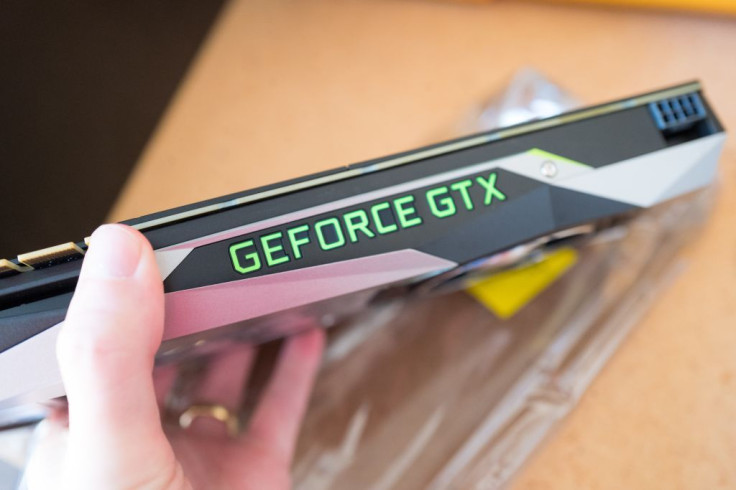
It has been two years since Nvidia debuted its GeForce RTX 20-series graphics cards, and now all eyes are on its next generation of graphic cards: The highly touted GeForce RTX 3080, which is reportedly based on Nvidia’s new Ampere architecture.
Since the GeForce RTX 20-series got a minor refresh last year, leaks for the GeForce RTX 3080 have been coming quick, with tech enthusiasts speculating that the new series will launch sometime this 2020. This week, images of some massive Nvidia graphics cards just leaked and created buzz in the tech community, with speculations that they could be the two variations of the Nvidia GeForce RTX 3080.
The leaked images show an Nvidia GPU with 33 teraflops of theoretical floating-point performance. The images also come with a bit more info about the graphics cards, which may or may not necessarily be the GeForce RTX 3080.
If the two graphics cards in the images are the Nvidia GeForce RTX 3080, then that means the card, which is seen to power the next generation of gaming PCs, will come with 118 streaming multiprocessors in one and 108 in the other. That will translate to 7,552 CUDA cores in the former and 6,912 CUDA cores in the latter, setting both variations of the card up for high performance. The smaller chip has 48GB of VRAM and a 1.01 GHz clock, while the larger chip is packed with 24GB of memory and runs at 1.11 GHz.
Nvidia has yet to confirm the specs of the upcoming graphics card, but there’s been quite a bit going on with the benchmarks leaked. For instance, the measurement of FP32 performance is based on the assumption that Nvidia may double its floating points units in the next-gen GPUs in its bid to double its performance in teraflops.
However, if Nvidia doesn’t double these floating-point units, then the teraflops won’t double as well, and the tech community may be disappointed to get just a big graphics card with a little under 17 teraflops and a small graphics card with only about 14 teraflops.
The good news, however, is that considering they’re calculated from clock speeds, the figures can still dramatically pick up. Even if the bigger card turns out to have only 17 and not 33 teraflops, boosting its clock speed to match the Titan RTX’s 1.77GHz will significantly ramp up its floating-point performance to over 26 teraflops.
The 24 GB and 48 GB of VRAM are also notable, considering that the card’s predecessor, the Nvidia RTX 2080 Ti, only offers 11GB of VRAM.
Speculations are rife that Nvidia will unveil the new Nvidia GeForce RTX 3080 at the GTC AI conference this March and release the new cards in June, in time for the annual Computex 2020. However, Nvidia remains tight-lipped about the specs and release date of the new graphics card so the tech community should take these rumors with a grain of salt.
© 2025 Latin Times. All rights reserved. Do not reproduce without permission.




